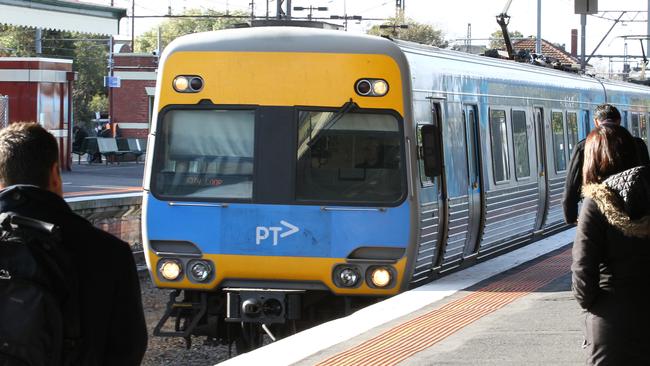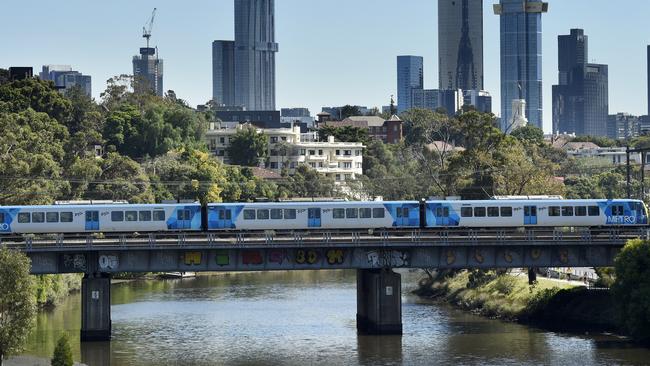Melbourne’s fastest train lines revealed
Slower train speeds are doubling the length of the morning commute for some passengers. See how fast your trip is.

Victoria
Don't miss out on the headlines from Victoria. Followed categories will be added to My News.
Commuters in Melbourne’s west spend less time on the train travelling into the city, new data reveals.
Research conducted by strategic city planner Declan Martin showed that trains on the Wyndham Vale, Melton and Sunbury lines were the fastest at 63.6 km/h, 54.6 km/h and 54.6 km/h.
In comparison, the slowest average speeds were on the Williamstown line at 30.2 km/h and the Alamein line at 30.8 km/h.
Glen Waverley came in at 35.6km/h, Frankston 38.8km/h, Cranbourne 45.6km/h and Pakenham 48.3km/h.
Mr Martin said the data showed the average journey speed for morning citybound services.
“The fastest terminus to CBD trains tend to come in from the outer west, where stations are spaced out further and have faster line speeds,” he said.
“On a terminus to CBD trip, average speeds are fastest to Wyndham Vale and Melton operated by V/Line, but the fastest Metro service is from Sunbury.
Mr Martin said the results didn’t surprise him.
“There are many factors impacting average train speeds, including types of rolling stock used and general line speeds, however, the largest factor when comparing types of lines is station density and stopping patterns,” he said.
“The figures don’t surprise me, especially when you sit on a train on the Mernda line then head over to the west and catch a train to Melton.
“It’s immediately noticeable that some lines are faster than others, once again this is largely down to line speeds and station density.”
Mr Martin said removing level crossings and providing modern, high-quality tracks could improve train speeds.
“Lots can be done to increase average speeds on slower lines,” he said.
“I’ll point to the Glenhuntly crossing removal on the slower Frankston line as an example, which will remove a tram-train conflict and create faster speeds.
“Altering stopping patterns is another way to possibly increase average speeds for a terminus to CBD train journey.”

A Department of Transport spokeswoman said hundreds of extra services had been introduced.
“Most train stations across Melbourne were built at a time when our city was very different to the sprawling metropolis more than five million people call home today,” she said.
“Train stations were traditionally built closer together, meaning there isn’t a very long distance for a train to gain speed before it can safely stop again for passengers.
“Many of our newer stations have a greater distance between stops to connect more passengers than ever before — with other modes such as buses playing an important role in connecting people to stations.
“We have introduced hundreds of extra services, responded to changing travel patterns and are continuing to deliver important infrastructure upgrades to improve services and accessibility with our operators to make travelling on public transport better than ever.”





